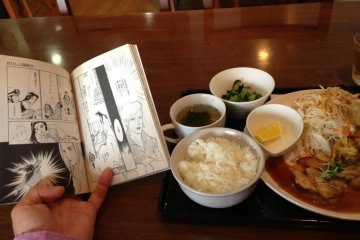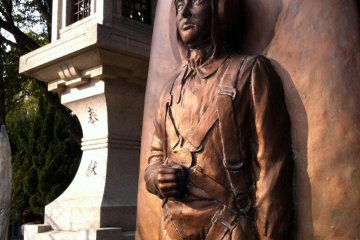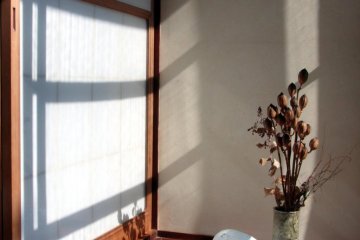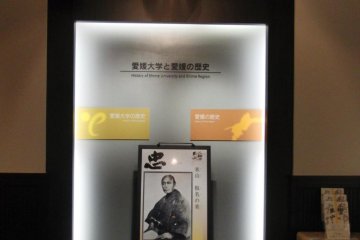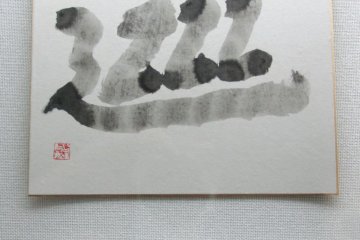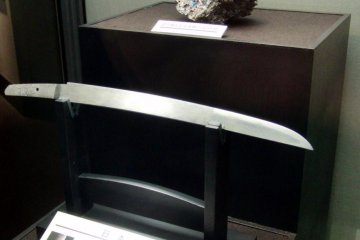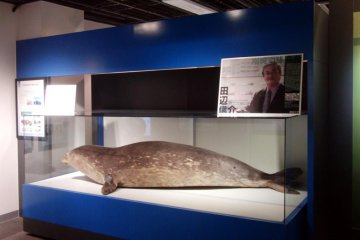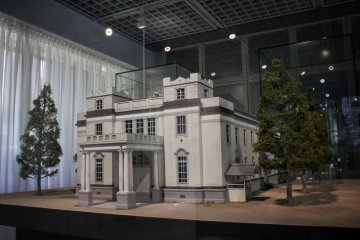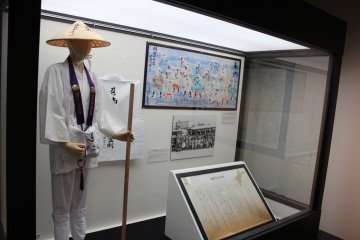Ehime University stands on historically significant ground to the north of Matsuyama Castle. This area was once a major settlement in the Jomon Period of Japanese prehistory from about 14,000 BC to 300 BC. Before any construction work can take place on the campus here, an archaeological survey must be undertaken. When I went there on business recently, I came across a little fenced off corner where men in hard hats were carefully brushing away soil and taking photos at the bottom of a significant hole in the ground. Even from the lip of the hole, I could see that they had uncovered some pottery shards.
The museum covers this history, while looking at the other fields of scientific research undertaken at the university. Most of the information is in Japanese only, but the exhibits themselves are very attractive and self-explanatory to a large degree.
The museum is a quadrant that surrounds a grassy area with sculptures and benches. The exhibits change every six months. When I went, the first part covered rocks and minerals. The university has an extensive collection of beautiful specimens, all of which had labels showing their type and place of origin in English. The brightly colored crystal formations embedded in plain grey rock were particularly attractive.
The second room was filled with calligraphy. This is not something I can easily decipher, but there are some examples of characterful and idiosyncratic script. This exhibit rotates with a presentation about the Shikoku Pilgrimage and Camino de Santiago. The next section covered pottery and steel. Since the university sits on a Jomon site, a period named for the rope patterns often found on its pots, it’s not surprising that they have plenty of examples. The exhibit about steel covers an experiment undertaken to forge a sword from raw materials using an earthen steel furnace.
Other exhibits cover the evolution of the earth, the efforts of the ocean monitoring center to track the origins and effects of pollution, and rare earth materials. But besides the minerals, the exhibit that I enjoyed most was the insects. These are presented beautifully in well-lit glass cases. From the tiniest beetles and crickets not much bigger than a pin-head, to great armored things the size of a fist, they’re all arranged geometrically by size. The butterflies and moths are very well preserved so that their colors and sheen still dazzle. It must be said that this room does rather stink of moth balls. Obviously robust precautions are required to prevent posthumous cannibalism.
The museum is free, so there’s really no reason not to drop in if you’re in the area.



